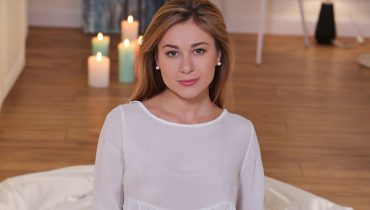For Emily Turner, sleepless nights used to feel endless. “I’d stare at the ceiling at 2 a.m., replaying conversations from the day, worrying about tomorrow,” she says. “Even when I was exhausted, my mind refused to rest.”
Like millions of Americans suffering from insomnia and anxiety-induced restlessness, Emily found relief not in medication, but in mindfulness. “Meditation apps became my lullaby,” she smiles. Her story shows how technology, used right, can transform restless nights into moments of calm awareness.
The Science Behind Sleep and Meditation
According to the CDC, nearly one in three adults in the U.S. doesn’t get enough sleep. Chronic sleep deprivation increases the risk of depression, obesity, heart disease, and weakened immunity. “Sleep isn’t just recovery — it’s repair,” Emily explains. “Once I understood that, I started treating rest as self-care, not laziness.”
She began with the popular meditation apps for better sleep like Calm, Headspace, and Insight Timer. “I didn’t expect much,” she admits. “But the first time I tried a sleep story narrated by Matthew McConaughey, I actually fell asleep mid-sentence — that hadn’t happened in years.” These apps work by slowing brainwave activity, guiding users into relaxation through breathing, visualization, and progressive muscle relaxation. Over time, they help retrain the nervous system to wind down naturally.
Building a Digital Sleep Routine
Emily’s routine became simple but sacred. “An hour before bed, I’d dim the lights, turn off email notifications, and open Calm,” she says. “Then I’d do a 10-minute body scan meditation followed by a sleep story.” Within weeks, her insomnia improved. “I used to dread bedtime — now it feels like a ritual.”
She also discovered new tools: Headspace’s “Sleepcasts” mimicked comforting ambient sounds, while Insight Timer offered thousands of free guided meditations by sleep coaches. “I found a teacher whose voice felt like safety,” she says softly. “It reminded me that rest is something we deserve, not earn.”
What Emily Learned About Technology and Mindfulness
At first, Emily worried that using her phone in bed contradicted sleep hygiene advice. “It’s ironic — using a screen to stop thinking,” she laughs. But she adjusted by using dark mode, setting a timer, and keeping the device out of arm’s reach. “Technology can be a bridge or a barrier,” she says. “The trick is choosing apps that quiet, not stimulate, your mind.”
Her experience mirrors new research from Stanford’s Center for Sleep Medicine, which found that mindfulness-based mobile interventions can significantly improve sleep quality and reduce nighttime anxiety. “It’s proof that rest can be learned,” Emily says. “You can rewire your brain to relax.”
Mindful Lessons Beyond the Pillow
Sleep improvement wasn’t the only benefit. “Once I learned to slow my breathing, I handled daytime stress better too,” she says. “The calm I practiced at night followed me into the day.” Meditation apps, she realized, aren’t just for bedtime; they train emotional resilience. “When I’m anxious now, I pause, breathe, and reset — anywhere, anytime.”
Her favorite practices include guided breathing, gratitude reflections, and body relaxation meditations. “It’s not spiritual — it’s neurological,” she says. “You’re teaching your brain safety signals.” Her therapist later confirmed what Emily already felt: better sleep is the foundation of emotional stability. “Without rest, every problem looks bigger,” she explains. “With sleep, life regains perspective.”
Emily’s Tips for Using Meditation Apps Effectively
For readers seeking similar relief, Emily offers simple but powerful advice:
- Set consistency over duration: Even 5 minutes a night can reset your rhythm if practiced daily.
- Choose voice and tone carefully: A calming narrator matters more than perfect content.
- Pair sound with scent: Lavender or chamomile oils reinforce relaxation cues.
- Avoid screens afterward: Let your body stay in its relaxed state.
Now, Emily uses meditation not as a cure, but as care. “I don’t expect perfect sleep every night,” she says. “I just give myself permission to rest.” Her closing thought captures the spirit of her journey: “Meditation apps don’t make life quieter — they teach you to find quiet inside yourself.”





























































